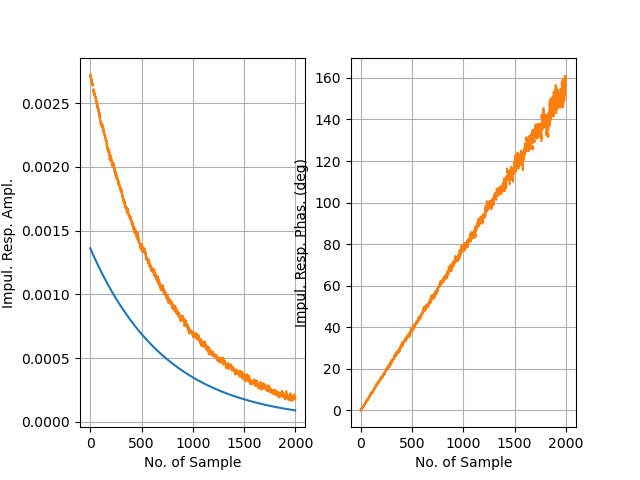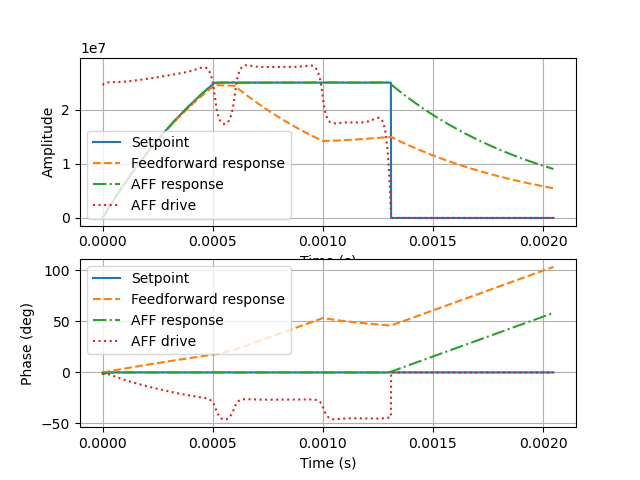1
2
3
4
5
6
7
8
9
10
11
12
13
14
15
16
17
18
19
20
21
22
23
24
25
26
27
28
29
30
31
32
33
34
35
36
37
38
39
40
41
42
43
44
45
46
47
48
|
vc2 = np.zeros(simN, dtype = complex)
vaff = np.zeros(simN, dtype = complex)
for pul_id in range(10):
print('Simulate pulse {}'.format(pul_id))
state_rf = np.matrix(np.zeros(Brfd.shape), dtype = complex)
state_bm = np.matrix(np.zeros(Bbmd.shape), dtype = complex)
for i in range(simN):
status, vc2[i], _, state_rf, state_bm = sim_ncav_step(Arfd, Brfd, Crfd, Drfd, vaff[i], state_rf,
Abmd = Abmd,
Bbmd = Bbmd,
Cbmd = Cbmd,
Dbmd = Dbmd,
vb_step = vb[i],
state_bm0 = state_bm)
vff_cor = AFF_ilc(vc_sp[:M] - vc2[:M], L)
vaff[:M] = vaff[:M] + vff_cor
plt.figure();
plt.subplot(2,1,1)
plt.plot(T, np.abs(vc_sp), label = 'Setpoint')
plt.plot(T, np.abs(vc1), '--', label = 'Feedforward response')
plt.plot(T, np.abs(vc2), '-.', label = 'AFF response')
plt.plot(T, np.abs(vaff), ':', label = 'AFF drive')
plt.legend()
plt.grid()
plt.xlabel('Time (s)')
plt.ylabel('Amplitude')
plt.subplot(2,1,2)
plt.plot(T, np.angle(vc_sp,deg = True), label = 'Setpoint')
plt.plot(T, np.angle(vc1, deg = True), '--', label = 'Feedforward response')
plt.plot(T, np.angle(vc2, deg = True), '-.', label = 'AFF response')
plt.plot(T, np.angle(vaff, deg = True), ':', label = 'AFF drive')
plt.legend()
plt.grid()
plt.xlabel('Time (s)')
plt.ylabel('Phase (deg)')
plt.show(block = False)
|

